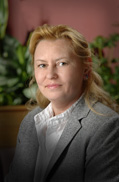ARCHIVED: NOT AVAILABLE FOR CREDIT
Changing Landscape of HIV Testing
Two fourth-generation HIV antigen/antibody combination assays are now available in the United States. These assays detect both anti-HIV antibodies and p24 antigen, and reduce the serologic window by detecting HIV infection on average five to seven days earlier than third-generation Ab-only immunoassays. This advance in technology will improve the diagnosis of acute HIV infection and has significant implications for follow-up confirmatory approaches.
Therefore, the CDC has proposed a new HIV diagnostic algorithm recommending fourth-generation assays as the initial screening test and eliminating the Western blot for confirmation. This revised algorithm emphasizes the importance of improved detection of acute HIV infection, accurate discrimination between HIV-1 and HIV-2 infection, and nucleic acid tests (NAT) for confirmation of acute HIV infection.
Because there are substantial changes to the algorithm that has been in place for more than 20 years, laboratorians should become familiar with the new algorithm, advances in screening assay technology, and the limitations of available assays recommended for confirmation. Knowing what assays the laboratory is currently performing for HIV diagnosis is crucial for appropriate result interpretation and patient follow-up.
Originally presented on June 21, 2012, in Salt Lake City, Utah.
Lecture Presenter
 | Patricia R. Slev, PhD Medical Director, Serologic Hepatitis and Retrovirus Laboratory |
Dr. Slev is the medical director of the Serological Hepatitis/Retrovirus Laboratory at ARUP and an assistant professor of pathology at the University of Utah School of Medicine. Dr. Slev earned her PhD in immunology and laboratory medicine from the University of Florida, Gainesville and completed a fellowship in clinical chemistry at the University of Utah. She is board certified by the American Board of Clinical Chemistry. Dr. Slev’s research interests are in immunogenetics and pathogen interactions, particularly HIV and viral hepatitis.
Objectives
After this presentation, participants will be able to:
- Explain the principles and benefits of Ag/Ab combination HIV screening assays.
- Describe the new CDC HIV diagnostic algorithm.
- Understand the limitations of Western blot confirmation.
- Use screening and follow-up confirmatory tests appropriately.
Sponsored by:
University of Utah School of Medicine, and ARUP Laboratories
 Site Search
Site Search

